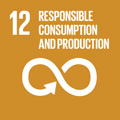- Docente: Albamaria Parmeggiani
- Credits: 6
- SSD: VET/02
- Language: Italian
- Teaching Mode: In-person learning (entirely or partially)
- Campus: Cesena
- Corso: First cycle degree programme (L) in Aquaculture and Fish Production Hygiene (cod. 8834)
Learning outcomes
At the end of the course the student who has previously learned the morphology of Teleosts and Chondrostei, will learn the basic mechanisms that govern the functions of the different cell types, tissues, organs and systems of aquatic animals with special reference to the respiratory, cardiovascular, digestive and excretory systems. In particular, the student will get to know the general physiology of the major organ systems and will be provided with the basics to attend the specific courses within the health and livestock sectors
Course contents
General physiology of the cell. Simple diffusion, facilitated diffusion, active transport. Endocitosis, esocitosis. Osmotic regulation of the cell tone. Physiology of the blood and the cardiocirculatory apparatus in teleostea. Physiology of respiratory and gaseous exchanges in teleostea. Physiology of the digestive system. Physiology of excretory organs in teleostea. Physiology of floating and swimming. Physiological differences in freshwater and salt water species. Adaptations to salt water and freshwater in eurialin species. Physiology of the sense organs; autonomic sympathetic and parasympathetic nervous system. The physiology of cephalopod mollusks, bivalves and crustaceans of interest in aquaculture.
Readings/Bibliography
Students who do NOT attend classes are advised not to use only the teaching material provided by the teacher for exam preparation; this material must be integrated with the recommended texts or with the notes taken during the lesson as the only images and diagrams are not sufficient for exam preparation!
Fisiologia degli animali marini. Alessandro Poli, Elena Fabbri. II edizione 2018 EdiSES s.r.l, Napoli.
Encyclopedia of Fish Physiology From Genome to Environment Reference Work • Editor-in-Chief: Anthony P. Farrell; Elsevier 2011Fisiologia animale. R. Hill, G. Wise, M. Anderson. Zanichelli editore, Bologna 2006
The laboratory fish edited by Gary K.
Ostrander. Academic press, San Diego (CA) 2000.
Teaching methods
Ex-catedra lectures
Practical lessons in the laboratory or experimental fish farm
During the course, "in itinere" checks will be made to evaluate the learning of students
Students with special needs are invited to contact the teacher by e-mail or at the end of the lessons, to illustrate them and to organize the teaching and the exams in the best possible way.
Assessment methods
In cases where provided for by the DSA and Disability regulations, aids are allowed which must be agreed in advance with the teacher (= before taking the exam) and with the teaching services of the CdS.
The examination is ORAL.
value scale that determines the final grade
preparation on a limited number of topics covered in the course and analytical skills that emerge only with the help of the teacher expression in an overall correct language: 18-19
preparation on a limited number of topics covered in the course and autonomous analysis skills with modest connection skills expression in correct language: 20-24
preparation on a large number of topics covered in the course ability to make independent choices of critical analysis and connection between topics, mastery of specific terminology: 25-27
substantially exhaustive preparation of the topics covered in the course ability to make connections and autonomous choices of critical analysis, full mastery of specific terminology with capacity for argumentation and self-reflection: 28-30-30L
Teaching tools
- audio-visual material
- educational visits
Links to further information
http://www.acquacoltura.unibo.it/
Office hours
See the website of Albamaria Parmeggiani
SDGs



This teaching activity contributes to the achievement of the Sustainable Development Goals of the UN 2030 Agenda.
